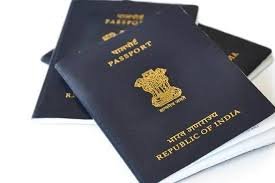The Geopolitical Landscape of 2024: Key Shifts and Emerging Powers
Introduction: A Changing Global Order
The geopolitical landscape in 2024 is marked by significant shifts as emerging powers assert their influence, traditional alliances are tested, and new conflicts arise. This article explores the key geopolitical developments of the year, analyzing the implications for international relations and global stability.
1. The Rise of Emerging Powers
Several countries are emerging as significant players on the global stage:
- China’s Continued Ascendancy: China’s influence continues to expand in 2024, particularly in Asia and Africa. Its Belt and Road Initiative (BRI) is reshaping trade routes and fostering economic ties across continents. As China invests in infrastructure projects, its strategic partnerships are solidifying its position as a global power, challenging traditional Western dominance.
- India as a Global Player: India is increasingly asserting itself as a key player in international affairs. With a growing economy and a youthful population, India is poised to take on a leadership role in regional and global issues. In 2024, its participation in initiatives like the Quad (with the U.S., Japan, and Australia) highlights its importance in countering Chinese influence in the Indo-Pacific region.
2. Shifts in Traditional Alliances
The traditional geopolitical landscape is evolving, leading to new alliances and tensions:
- Transatlantic Relations: The relationship between the U.S. and Europe is experiencing both collaboration and strain. While NATO remains a cornerstone of security, differing views on climate change, trade, and defense spending are prompting discussions about the future of transatlantic cooperation. In 2024, the Biden administration continues to navigate these complexities, seeking to strengthen ties while addressing domestic and foreign challenges.
- Middle East Realignment: The Middle East is witnessing significant geopolitical shifts. The normalization of relations between Israel and several Arab nations has altered the regional dynamics. In 2024, this trend is expected to evolve further, with potential new agreements and collaborations emerging, particularly in technology and security.
3. Rising Tensions and Conflicts
Several regions are facing heightened tensions and potential conflicts:
- U.S.-China Rivalry: The strategic rivalry between the U.S. and China remains a focal point in 2024, with implications for trade, technology, and military presence in the Asia-Pacific region. As both nations vie for influence, competition in areas such as artificial intelligence and cybersecurity could lead to increased tensions.
- Russia’s Geopolitical Moves: Russia continues to assert its influence in Eastern Europe and Central Asia. In 2024, its actions in Ukraine and its relationships with neighboring countries will be closely scrutinized. The West’s response to Russia’s assertiveness, including sanctions and diplomatic efforts, will shape the region’s stability.
4. The Role of Multilateralism
In response to these geopolitical shifts, multilateralism is becoming increasingly important:
- International Organizations: Organizations such as the United Nations, the World Trade Organization, and regional bodies play crucial roles in addressing global challenges. In 2024, there is a renewed focus on reforming these institutions to better reflect the current geopolitical realities and promote collective action on issues such as climate change, security, and public health.
- Global Cooperation on Issues: In the face of global challenges, countries are recognizing the need for cooperation. The COVID-19 pandemic underscored the importance of global health collaboration, while climate change continues to demand collective efforts. In 2024, international agreements and partnerships will be vital for addressing these pressing issues.
Conclusion: Navigating a Complex Landscape
The geopolitical landscape of 2024 is characterized by both challenges and opportunities. As emerging powers reshape the global order, traditional alliances face new tests. The ability of nations to navigate these complexities through diplomacy, cooperation, and strategic partnerships will be essential for maintaining stability and addressing global challenges. In this evolving landscape, the future of international relations remains dynamic and uncertain.











